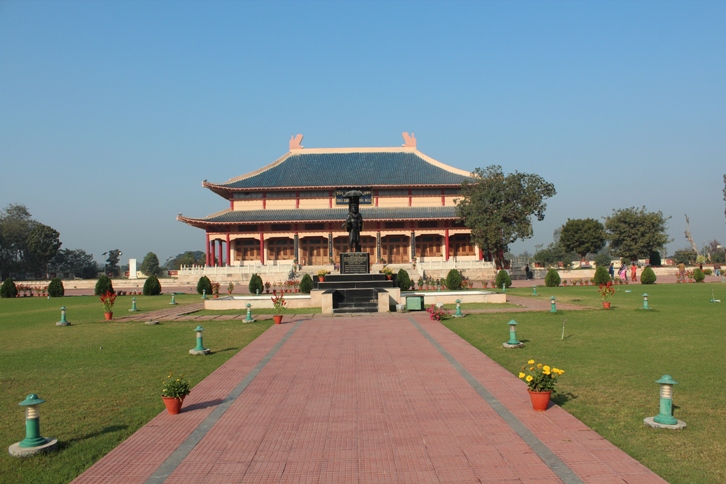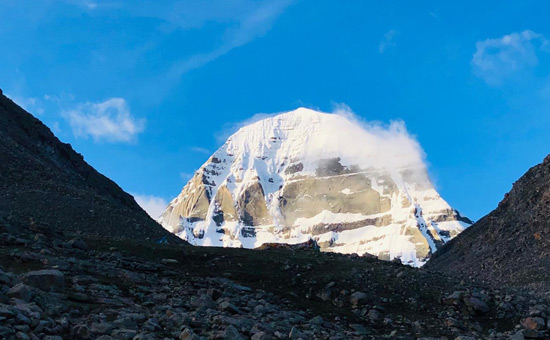-
This article gives reasons for Chinese aggression in Ladakh and suggests how Indian can counter Chinese expansionism.
-
Idea to fund acqusition of weapons.
The best thing about the current standoff with China is the breaking of many myths for e.g. China’s rise shall be peaceful, China is not in competition with India, China means what it says, Running a huge trade deficit is a way to keep China humoured, PLA is invincible, Pakistan and China will not join hands against India, Summit meetings between top leaders can influence China etc. For this wake-up call India must be grateful to the 20
soldiers who made the Supreme Sacrifice in Galwan Valley.
Post Doklam 2017, China (Global Times) sensed that Modi’s subsequent outreach was because he did not want any border incursions before the 2019 general elections. Thus, Indians must note that the Chinese are beginning to understand the nuances of Indian politics.
China is not vacating the areas it has occupied in Eastern
Ladakh. China will try to provoke India into war. India must be cool, firm and
alert.
This article tries to decipher reasons behind Chinese aggressions
and suggests how India can counter China.
First, heed these words, “A
successful and democratic India, which rises fast and eliminates its poverty in
a reasonable period, is the biggest challenge to the legitimacy of China... The competition between India and China is, therefore, an ideological one,' argued K Subrahmanyam, a noted strategic thinker and author (External Affairs Minister Dr S Jaishankar's father). Source
So what could be reasons for China’s aggressions in Ladakh?
Aggressions are an excuse to express displeasure with India’s actions & thinking. China wants-
1. Ladakh and Tawang for itself and Kashmir Valley for its iron-brother Pakistan.
2. That India should continue to grow below potential and cease to compete with China for e.g. in attracting
foreign direct investment in manufacturing.
3. That India should become part of the Belt and Road Initiative (BRI).
4. That India should not have close ties with the U.S.
If indeed India and the U.S. form an alliance the Chinese
have only themselves to blame. After all, India had not entered into such an
alliance since 1962.
5. India should stop aggressively promoting its Soft Power globally. This includes sharing knowledge of Yoga and Ayurveda for free.
6. The tag for the ‘fastest growing economy in the world’ belongs only to China. It irked the Chinese no end when India became the world’s fastest growing economy even if it was for a short period.
7. India not to make monuments that hold world records for e.g. Statue of Unity is the tallest in the world. (Communist Party mouthpiece Global Times had noted Modi’s desire w.r.t to Sardar Patel’s statue).
8. Keep India off balance by raising new demands and disputes regularly.
Days after the 5-point agreement in Moscow China said that it does not accept Ladakh’s Union Territory status and reiterated its 1959 claim line as LAC. Another e.g., at the Global Environment
Facility (GEF) meeting on June 2 and 3, 2020 China claimed Sakteng Wildlife
Sanctuary in Bhutan for the first time.
9. India to soften its stand on Pakistan, perhaps accept terrorism as God’s gift.
10. To keep Indian Army occupied defending border with Chinese Occupied Tibet.
This way India has lesser resources to focus on
development and build a Navy that can challenge the Chinese.
11. Complete control over Ladakh and Gilgit.
China wants control of water just like occupation of Tibet has given China control of Mansarovar Lake and the rivers which originate from it.
Harita wrote in MyInd.net, “Gilgit Baltistan, has a rich reserve of various minerals is home for three largest glaciers - Baifo Glacier, Baltoro Glacier and Batura Glacier; contains eight highest peaks aside Mount Everest and Kanchenjunga.”
12. Bhutan to establish diplomatic relations with it and give up its area.
Thus, China can take control of the Chicken’s Neck at will (one more pressure point in case India crosses the line).
 Hieun Tsang Memorial, Nalanda.
Hieun Tsang Memorial, Nalanda.
Without sounding pompous, China probably believes that if
India goes unchecked now it might pose a challenge to China by 2035.
China might also have reckoned that it was a good time for salami-slicing in Ladakh since India’s political leadership is pre-occupied with Covid19, falling economic growth, dwindling revenue and fiscal constraints.
China wants Ladakh and Tawang because it probably believes that in the post Dalai Lama era, the centres of Tibetan Buddhist power would rest in the Himalayan region. Chinese think long-term.
Control over Ladakh and Valley would enable China to build a shorter and secure road from Chinese Occupied Tibet to Pakistan (Gwadar). This would reduce risk of transporting goods via sea.
Further, there would be no danger to its investments in Gilgit and Baltistan because India cannot claim the state of J&K, of which Gilgit was a part in 1947, to be part of India because it would be left with only Jammu region i.e. 26,293 sq. kms (11.8%) of the 2,22,236 sq. kms covered by the Instrument of Accession.
Shishir Gupta wrote in Hindustan Times, “Many China watchers believe that the crux of India’s problem with PLA aggression in East Ladakh is that the Chinese PLA wants a second road via Karakoram Pass to link Tibet and Pakistan in case the Indian Army targets the Karakoram highway that runs via Khunjerab Pass linking Xinjiang to Gwadar port.”
Sooner or later, India has to accept that Tibet is at the heart of India’s problems with China.
India must have a coherent and not reactive (one that depends on how China behaves with India on other issues) Tibet policy. It can use the Tibet card in subtle ways for e.g. by awarding Dalai Lama the Bharat Ratna, not limiting his interactions within India and making Tibetan history/cultural links part of textbooks in schools and colleges. So also India must attract FDI from Taiwan.
 Kailash is part of India’s Civilizational identity.
Kailash is part of India’s Civilizational identity.
How can India counter Chinese expansionism?
India should hold ground & stand firm. It can counter Chinese expansionism in the following ways.
1. Revisit its nuclear policy of No First-use.
2. India's approach should be guided by national interests that may require it to Co-operate and Compete with China.
3. Focus on becoming an economic and military power for which we need REFORMS (States and Centre). TALK LESS WORK HARD should be the national motto.
4. Export Arms for e.g. Artillery Guns (ATAGs), Light Bullet Proof Vehicles and Missiles.
5. Continue building Border Infrastructure esp. in Ladakh and Arunachal Pradesh.
6. We should continue talking to the Chinese but be driven by a long term vision of nation building. Remember, China uses talks to buy time during which it builds national power.
7. Never trust the Chinese and believe that signing an agreement will ensure China fulfilling its side of the deal.
8. Always define terms in agreements for e.g. “PM Narasimha Rao accepted the term LAC with no mutually agreed definition in 1993 during his Beijing visit when the two sides signed the Agreement on the Maintenance of Peace and Tranquillity along the LAC.” Source
9. India must try to build bridges between the U.S. and Russia and U.S. and Iran such that both Russia and Iran are weaned away from the Chinese sphere of influence.
 Public funding of weapons.
Public funding of weapons.
10. India must find Innovative ways to fund acquisition of weapons.
Involve people of India by creating a Bharat Suraksha
Trust (BST), to which donations get benefits under Section 80 (G) of the Income-Tax Act 1961.
India Inc, Resident Indians and Persons of Indian origin can contribute to BST for weapons once contracts are signed (PIO can only pay from rupee accounts).
Funds collected by BST should be used
only for the purposes for which the money was raised. If people see results
money shall pour in. Conversely, if the government used these funds elsewhere,
the idea will become a non-performing asset.
Trust
and transparency are key to the success of BST.
11. Make it clear to China that settlement of the Border question must include giving India unlimited road access to Mount Kailash through Ladakh and ownership of Mount Kailash which is part of India’s civilizational identity and worshipped by Hindus, Buddhists and Jains alike.
Amb P Stoban wrote in India Today, “The 1684 Temisgang Treaty defined the Ladakh-Tibet border, and also entitled the ruler of Ladakh to govern Menser Enclave, located at the foot of Mount Kailash. The Sikh, Dogra and British rulers respected the treaty. The area is roughly the same size as the 38,000 sq. km Aksai Chin.”
12. Be prepared that China will use the WATER card against India, could be river Brahmaputra or Sutlej in Himachal.
13. Protect road access to the Siachen Glacier.
14. If not done so already, develop the ability to strike at the Sino-Pakistani joint at the Karakorum Pass.
15. Monitor the progress and financial viability of BRI projects worldwide. The findings, including how countries have got into debt traps, be shared globally including in Mandarin.
16. Be part of QUAD. It should be accompanied by a regional agenda.
India should make it known, that should PLA lose the battle in eastern Ladakh, Indian forces might march into Chinese Occupied Tibet.
Also read
1. China’s arrogant rejection of new map of Ladakh an affront by Kanwal Sibal
2. Learnings
for India from Ladakh stand-off
3. Why
China dislikes India and LAC 2021
4. Are
China and Pakistan Siamese Terror Twins
5. India China Face Off – New Frontiers
6. Tibet remains at the cenrtre of the India-Chinese divide